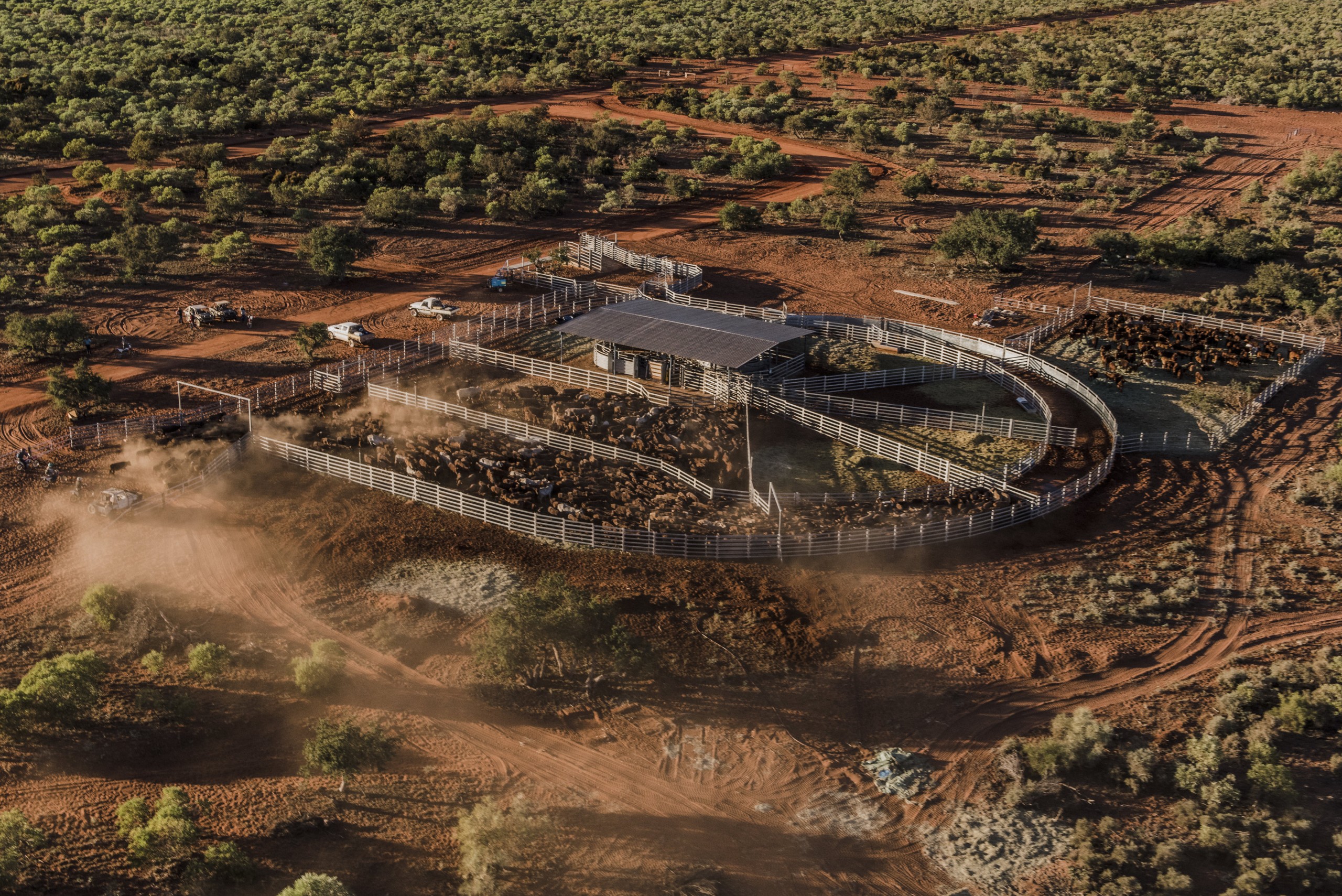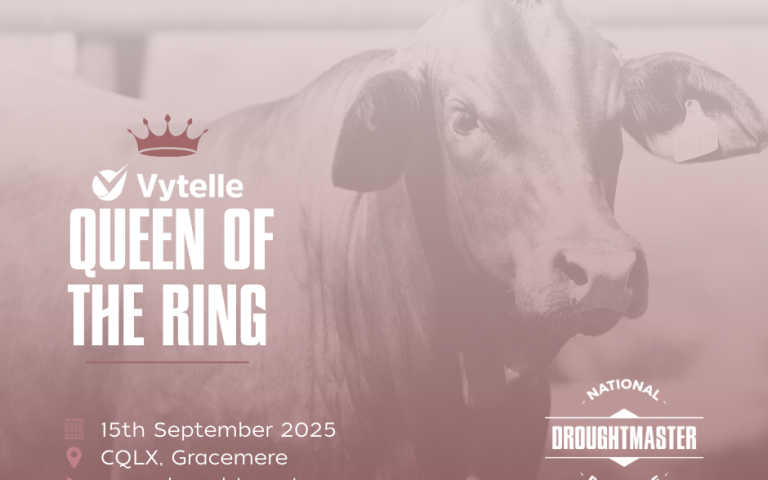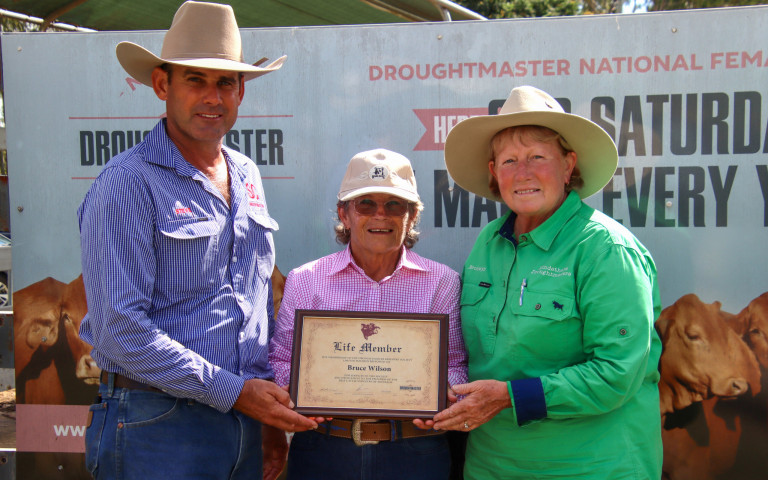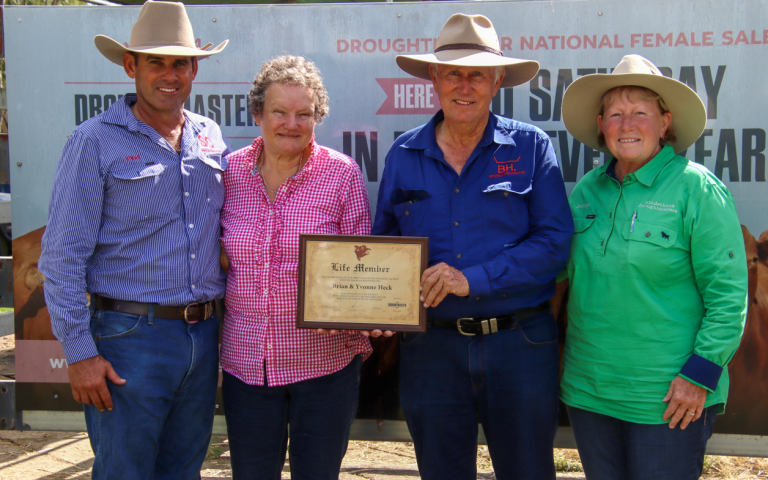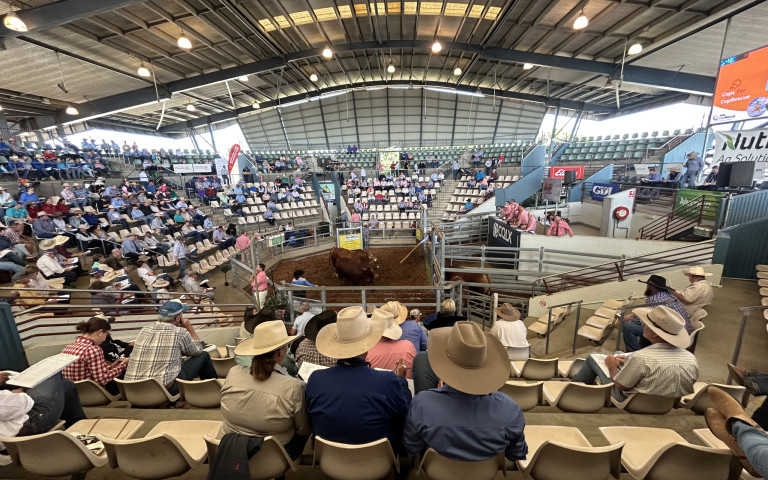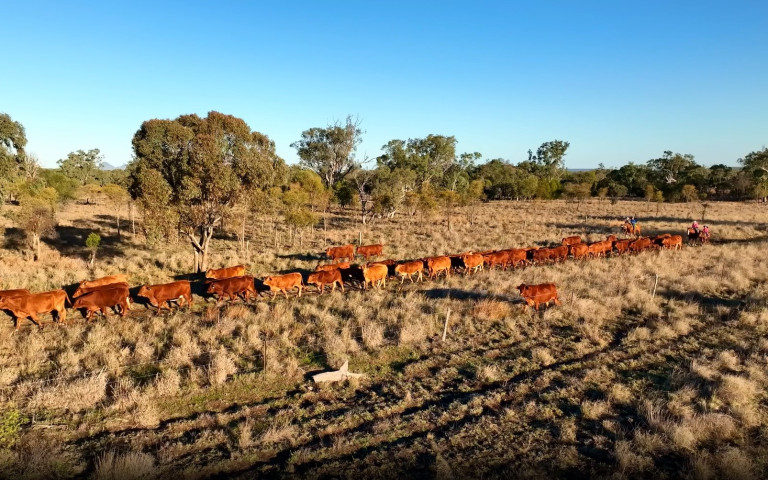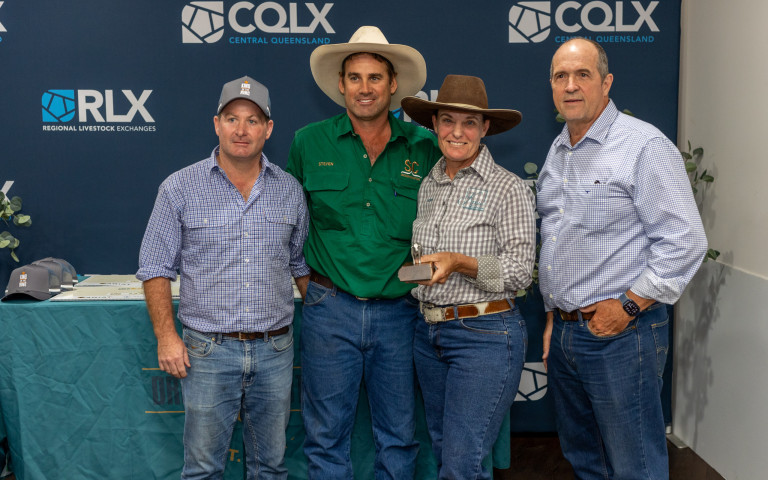Warrawagine Droughtmaster females destined for bigger stage
13 Jul 2023Warrawagine Cattle Co is planning to supply consistent quality lines of Droughtmaster females to keen interstate buyers while expanding throughput in the local feedlot market.
Managers Lux and Belinda Lethbridge have recognised the opportunity in the market, starting last year with the delivery of large drafts of heifers to most mainland states in Australia where buyers continue to seek highly functional, fertile animals with exceptional mothering abilities.
Comprising 14,500 breeders, Warrawagine Station southeast of Marble Bar is the hub of the breeding program, and Wallal Downs Station the sales and marketing depot.
Between the two operations, the company is positioned to maintain a pipeline of quality cattle for local and interstate buyers amid ever present seasonal challenges.
Irrigation infrastructure on Wallal Downs is a major factor that will help the business meet these objectives.
When weaner cattle from Warrawagine are trucked 250 kilometres to Wallal Downs they enjoy swathes of irrigated pasture consisting mainly of Rhodes grass under a 12 x 50-hectare centre pivot that is used for hay, silage and stand to graze.
In addition, Wallal Downs is furnished with large coastal areas where nutrient-dense buffel grass grows in abundance.
Water for the irrigation operation is from the Canning Basin aquifer from bores 400 metres deep, with flows of 250 litres a second and at a head pressure of 54 psi requiring no pumping.
Weaner steers and mickey bulls arrive at Wallal Downs between 150–250 kg where they commence on the buffel grass country before moving onto the centre pivot irrigation for 120 days, where they will leave between 350-400 kg at an average daily weight gain of about 0.8 – 1 kg.
“The performance of our Droughtmaster cattle is allowing us to accelerate our program to fast track our channel to market,” Lux Lethbridge said.
“And because Wallal Downs is on the Great Northern Highway, we have an all-weather road, even during the wet season that enables us to send cattle south 12 months of the year.”
Originally developed to supply the live export trade, Warrawagine Cattle Co hasn’t sent any cattle on ships to traditional markets such as Indonesia, Malaysia or Vietnam so far this calendar year.
Instead, cattle are trucked south to Fremantle where Warrawagine steers and mickey bulls are going to Israel. So far this year there have been two shipments in February and May and a third scheduled for July.
“This is an extraordinary development and testament to the breed’s versatility and quality that they are now going to a market which usually only took British type cattle such as Angus,” Mr Lethbridge said.
Mr Lethbridge said the establishment of a reliable southern supply chain route down the West Australian coast, nearly 1500 km from Wallal Downs, creates the opportunity to access feedlots through the inland wheatbelt to finish cattle on grain ahead of going to abattoirs for slaughter.
“The feedlot people are telling us they don’t want cattle with big ears and big humps,” he said.
“What they want is a flatback Droughtmaster and this is the direction our breeding program is taking.”
After 30 years of selective breeding, the Warrawagine Cattle Co herd now constitutes almost purebred Droughtmaster content.
Since the Lethbridges took on management of Warrawagine Cattle Co in 2016, the focus has been on tightly managing the fertility of the breeding cows.
An extensive weaning program is in place to support breeders getting in-calf each year. All breeders are pregnancy tested annually and recorded to measure success.
“Droughtmaster cattle have a level of fertility far beyond our expectations and consistently return us 80 per cent plus weaning rates year in year out in our harsh conditions,” Mr Lethbridge said.
“In April we undertook a major AI (artificial insemination) program with 400 of our best heifers to further improve the quality and quantity of the breeding herd.”
Mr Lethbridge said he was confident the investment in AI would pay dividends, assessing the Droughtmaster breed had the potential to access many different markets and observing that its reputation was gaining more recognition among breeders in Western Australia.
“And not just in the pastoral areas,” he said.
“At the recent annual Munda Reds bull sale at Gingin, it was interesting to see Droughtmaster bulls being sold into areas such as Esperance, Denmark, Busselton and Serpentine in the southwest of the state.
“The Droughtmaster is seen as a tropical breed, but they are going into temperate country further south. It tells me there’s a lot of opportunity for the breed in Western Australia.”
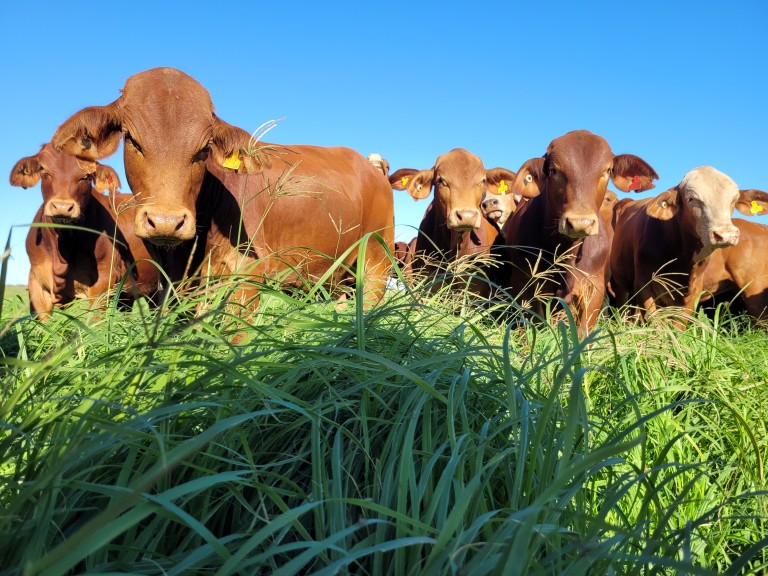
Exceptional Droughtmaster mothers from Warrawagine Cattle Co, which will offered in bigger numbers to buyers in the future, are consistently producing quality progeny, such as these animals gaining further condition on irrigated pasture at Wallal Downs.
